AP Debunks Ohio Woman's Claim That Buzz Aldrin Saw Aliens During Lunar Mission
Buzz Aldrin never said he saw aliens during his voyage to the moon, despite a recent online story claiming he passed a "lie detector test" confirming a close encounter.
The widely shared story started with the British tabloid Daily Star, which claims the second man to walk on the moon "took part" in research conducted by Sharry Edwards of the Institute of BioAcoustic Biology in Albany, Ohio. Edwards tells the Associated Press in an email, "There were no tests." Edwards says reviews of recordings of Aldrin's voice indicate he "has a firm belief" that he saw a UFO. But that's not what Aldrin said in a 2014 question-and-answer session on Reddit. He described a light that appeared to be moving alongside his spacecraft and said "it was not an alien." NASA spokesperson Stephanie Schierholz says in an email to the AP Aldrin likely saw panels that separated as the Apollo 11 command module maneuvered to dock with the lunar lander on the way to the moon in 1969.
This spacecraft will get closer to the Sun than any before it—without melting
It has taken 60 years, but scientists and engineers are finally ready to reach for the stars—our star, that is. And they’re confident they won’t get burned.
This summer, NASA will launch the Parker Solar Probe, an impressively heat-resistant spacecraft destined to glide closer to the surface of the Sun than any spacecraft before it. It will fly within about 6 million kilometers of the searing surface, more than seven times closer than earlier craft. If all goes to plan, the craft will be hurtling at 724,205km per hour and have its one-of-a-kind heat shield perfectly facing the surface as it makes those closest approaches. In about seven years, it will complete 24 orbits around the Sun and pass by Venus seven times.
All the while, the Parker probe will collect a constellation of data to help answer scientists’ burning questions—and solve some sizzling mysteries—about the orb of hot plasma that lights up our Solar System. Namely, it will try to help us finally understand why the Sun’s atmosphere is 300 times hotter than its surface, which itself is a balmy 5,727 degrees Celsius. This fact defies basic physics and to this day is unexplained. One of the leading hypotheses to account for the heat shift comes from famed physicist Eugene Parker, after whom the probe is named. In the mid-1950s, Parker theorized that the Sun’s super-heated corona could be explained by a complex system of plasma, magnetic fields, and energetic particles that spark solar explosions called “nanoflares.”
Scientists are thirsty for close-up data on those potential explosions as well as the cascade of energy called solar wind. With that data, they can put their hypotheses to the test. And in addition to helping us understand coronal heat, data on these sunny phenomena could help clear up poorly understood space weather, which can wreak havoc on satellites and power lines here on Earth.
In all, the Parker Solar Probe project is “the coolest, hottest mission under the Sun,” Nicky Fox told reporters Wednesday at a press viewing of the spacecraft at NASA's Goddard Space Flight Center in Greenbelt, Maryland. Fox is a Parker Solar Probe Project Scientist with the Johns Hopkins University Applied Physics Lab. She introduced the mission as “humanity’s first encounter with a star” and one that is “extremely historic.”
The initial idea to reach the Sun with a spacecraft came about in 1958, predating NASA’s operations, she noted. But it took six decades for technology to catch up with scientists’ dreams. The Parker Solar Probe is the realization of those visions—armed with the mother of all heat shields.
Taking the heat
The surface of the spacecraft will survive the brutal temperatures with an 11.43cm-thick (4.5 inches) carbon-composite shield, coated with a white ceramic layer. The outer white layer allows the probe to reflect back as much radiation as possible. At the closest approaches, the outer layer will face temperatures of 1,400 degrees Celsius. But the underside will maintain a much cooler 315-371 degrees Celsius, according to lead aerospace engineer Betsy Congdon, who spoke with Ars.
Discovery of sophisticated 115,000-year-old bone tools in China
An analysis of 115,000-year-old bone tools discovered in China suggests that the toolmaking techniques mastered by prehistoric humans there were more sophisticated than previously thought.
Marks found on the excavated bone fragments show that humans living in China in the early Late Pleistocene were already familiar with the mechanical properties of bone and knew how to use them to make tools out of carved stone. These humans were neither Neanderthals nor sapiens.
This major find, in which Luc Doyon of UdeM's Department of Anthropology participated, has just been published in the scientific journal PLOS ONE.
"These artefacts represent the first instance of the use of bone as raw material to modify stone tools found at an East Asian early Late Pleistocene site,"said Doyon. "They've been found in the rest of Eurasia, Africa and the Levante, so their discovery in China is an opportunity for us to compare these artifacts on a global scale.
Until now, the oldest bone tools discovered in China dated back 35,000 years and consisted of assegai (spear) points. "Prior to this discovery, research into the technical behaviour of humans inhabiting China during this period was almost solely based on the study of tools carved from stone," said Doyon.
Marks found on the excavated bone fragments show that humans living in China in the early Late Pleistocene were already familiar with the mechanical properties of bone and knew how to use them to make tools out of carved stone. These humans were neither Neanderthals nor sapiens.
This major find, in which Luc Doyon of UdeM's Department of Anthropology participated, has just been published in the scientific journal PLOS ONE.
"These artefacts represent the first instance of the use of bone as raw material to modify stone tools found at an East Asian early Late Pleistocene site,"said Doyon. "They've been found in the rest of Eurasia, Africa and the Levante, so their discovery in China is an opportunity for us to compare these artifacts on a global scale.
Until now, the oldest bone tools discovered in China dated back 35,000 years and consisted of assegai (spear) points. "Prior to this discovery, research into the technical behaviour of humans inhabiting China during this period was almost solely based on the study of tools carved from stone," said Doyon.
Mystery of purple lights in sky solved with help from citizen scientists
Notanee Bourassa knew that what he was seeing in the night sky was not normal. Bourassa, an IT technician in Regina, Canada, trekked outside of his home on July 25, 2016, around midnight with his two younger children to show them a beautiful moving light display in the sky -- an aurora borealis. He often sky gazes until the early hours of the morning to photograph the aurora with his Nikon camera, but this was his first expedition with his children. When a thin purple ribbon of light appeared and starting glowing, Bourassa immediately snapped pictures until the light particles disappeared 20 minutes later. Having watched the northern lights for almost 30 years since he was a teenager, he knew this wasn't an aurora. It was something else.


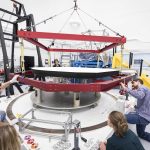
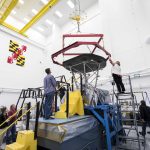
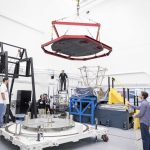
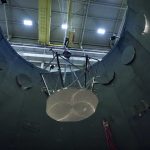
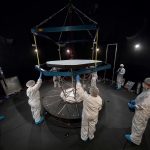
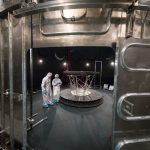
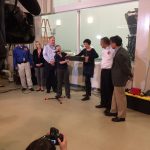





No comments:
Post a Comment